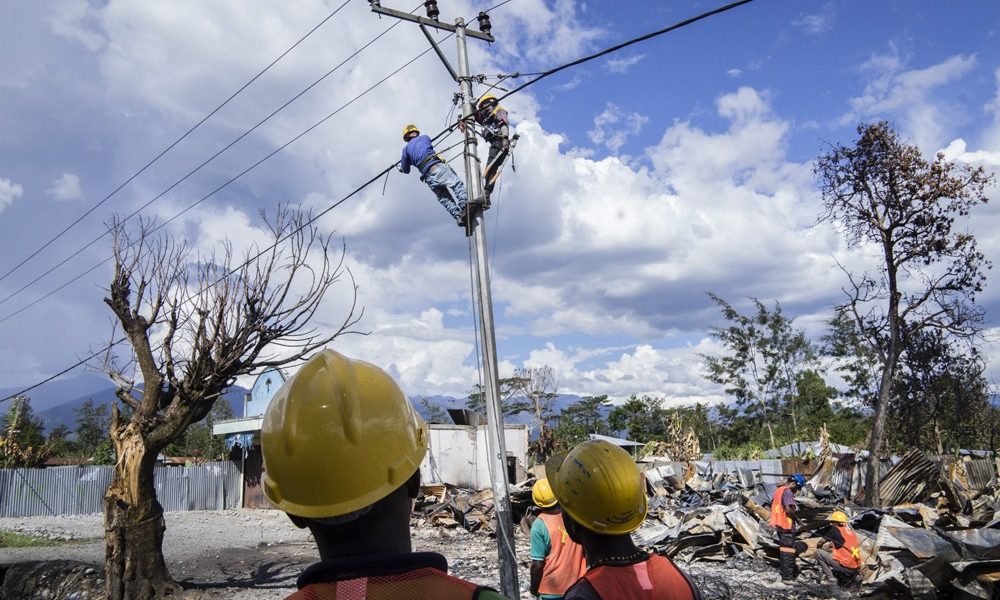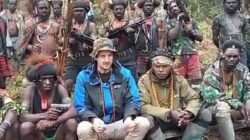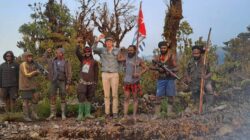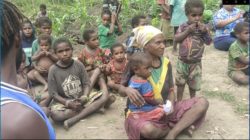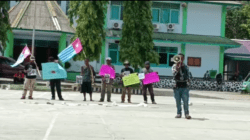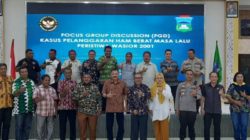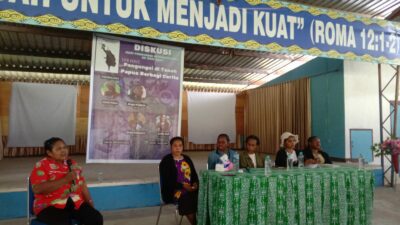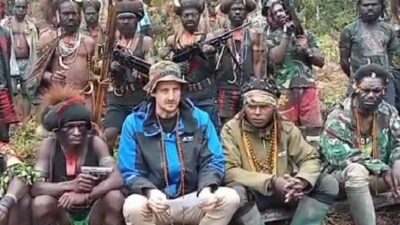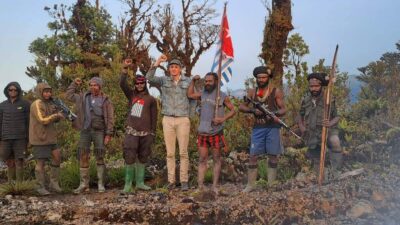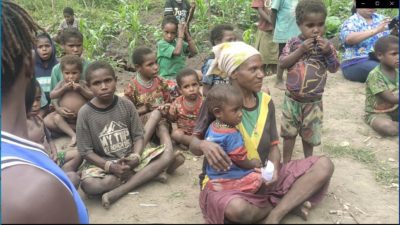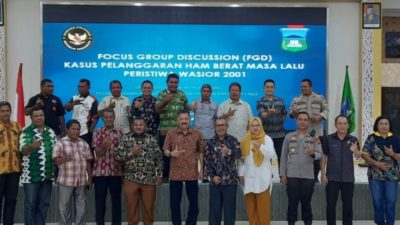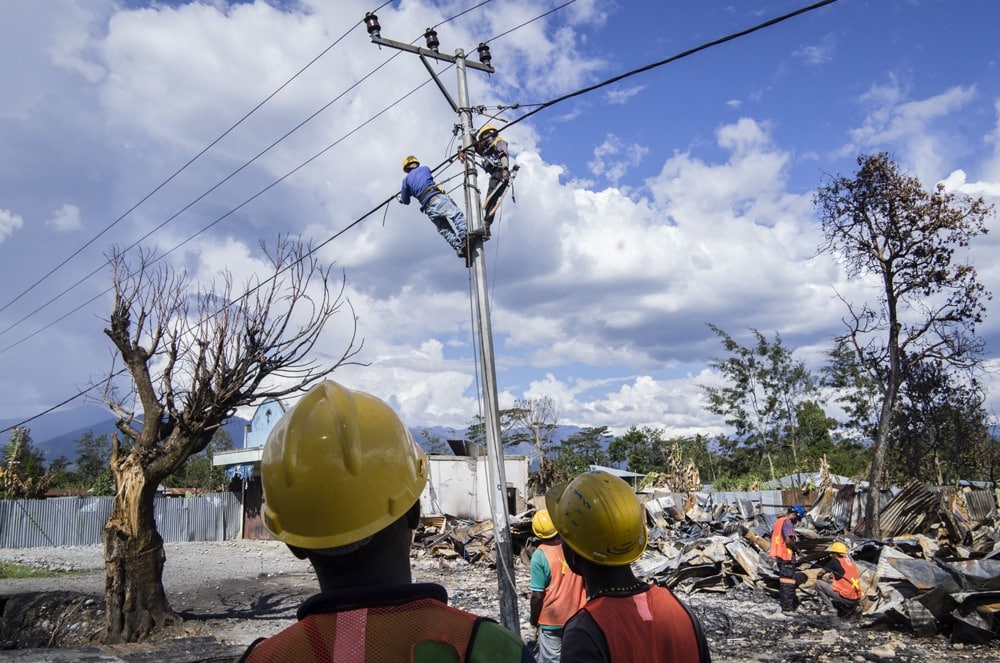
An exploded mass riot blasted Wamena, the capital of Jayawijaya Regency, Papua, on 23 September 2019 has shocked public’s sense of humanity. Everyone shaken and mourned to see how the anti-racism protest by students exploded into a riot killing at least 42 people and destroyed a half of the biggest town in Papua’s highlands.
But what people want right now is to embroider the already-torn-apart social relationship immediately, to promptly heal the wounds. On the other hand, the government has many things to concern if they want to rebuild a robust peace in society. The article is the second part of six articles of “Risking peace in Wamena”.
An obscured morning in Homhom
At the same time, hundreds of people dressed in high school uniform also gathered in Homhom, a location situated only 3.2 Km north of the Jayawijaya regent office. They looked furious. A pastor of Wesorama Baptist Church of the Papua Baptist Fellowship Church (PGBP) in Pikhe, the Rev. Simet Yikwa, said the mob wanted to approach the regent office to join the protest against racism by a teacher of SMA PGRI Wamena.
But, they were not able to pass the police at Wamena Police Headquarters in Homhom Street. While forcibly returned to the t-section in Pikhe Street, the mob were becoming more violent. “They threw stones in all directions. They are so many, perhaps thousand. They just threw away the stones randomly. But, no one set a fire at the time,” said the Rev. Yikwa.
The police repeatedly come to the scene and warned them with several warning shots. Instead of stepping down, the mob even became more desperate after hearing seven students been arrested by the police when they came to SMA Yapis Wamena. In the chaos, people scattered to run away trying to escape from Homhom Street.
Meanwhile, the chairman of the Papua Customary Council elected in the Extraordinary Congress, Dominikus Surabut, told that he met some protesters running from Homhom Street to the intersection of SD Percobaan and Sangiri streets.
“I was able talking to a high school student standing near me, ‘boy, wait a minute!’, but another student then shouted at me, ‘hey you! You’re provocateur!’ trying to hit my body with a wooden stick. I deflected, and the bat broke. But, it was not over yet. A girl came to approach. She hit my helmet with a big stone and kicked my motorbike,” said Dominikus Surabut.
Surabut believes that those who had abused him were students. However, he also thought some of the protesters look ‘mature’ as students. Because he was aware that the masses did not recognise him and he would not be able to calm them down, he finally pulled away.
Meanwhile, a resident Obeth Alua testified the crowd in the t-section of Homhom, and Pikhe streets refuse people to approach. Therefore, Obeth and his friend only watched a mass rampage occurred in front of Yudha Supermarket from a distance. Also, he does not know any of those who involved in the violence.
“They said they want to do the anti-racism rally. I don’t know those people, so I just watched from a distance. Suddenly I saw two people from the crowd shot down: a boy and a girl,” said Obeth Alua. He remembers the victims did not wear high school uniform.
The Rev. Simet Yikwa confirmed there was a boy shot during the rampage in Homhom Street. Later, he learned the boy’s name is Kelion Tabuni (20 years old), an architecture student from Universitas Negeri Manado, North Sulawesi. However, he was unaware of the girl that Alua mentioned of being shot and taken to Wesaput. Jubi also cannot obtain further confirmation about the girl from other sources.
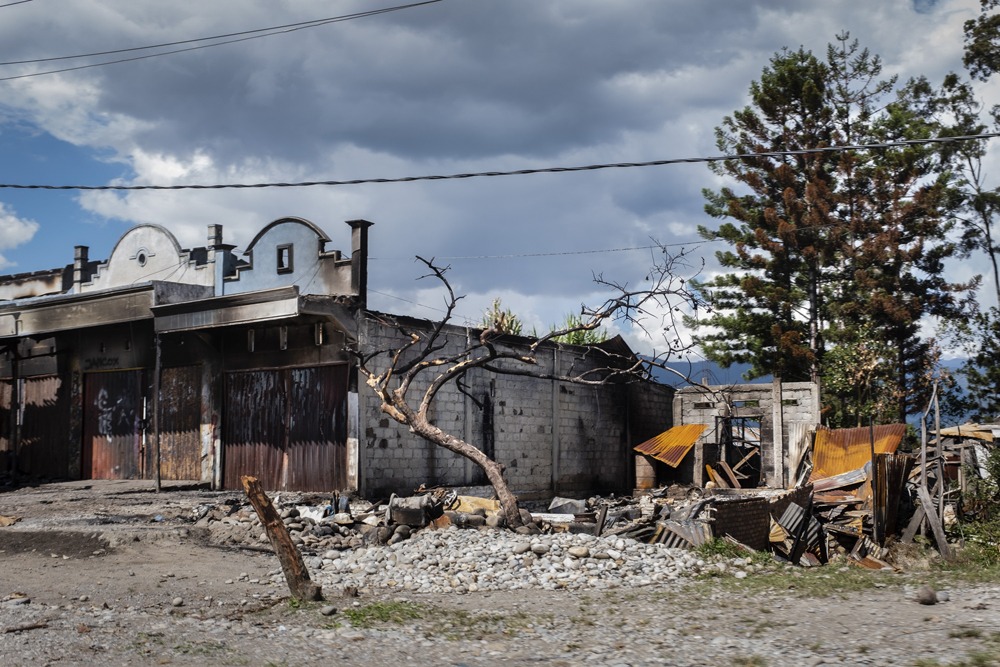
However, both the Rev. Yikwa and Alua testified about how they saw the wave of outrage amongst the masses rapidly grew after they saw Kelion Tabuni died. Some residents who previously watched from a distance turned angry, joined the crowd and attacked the shops surround Homhom and Pikhe streets.
“I saw some people carried the body of Kelion Tabuni, moved it to Pikhe. Meanwhile, the mob started attacking shops and stalls there. They took gasoline in the bottles displayed in front of the shops, threw it to the shops in Homhom Street and set alight,” said the Rev. Yikwa.
They burned Dina Teknik, a car repair shop located in Homhom Street, also Yudha Supermarket’s warehouse. During the rampage, some protesters and residents were shot.
While seeing the rampage start increased, the Rev. Simet Yikwa mobilised the officials of Wesaroma Baptist Church to evacuate the migrants. Most of them are the owners of shops, repair shops or stalls in Homhom and Pikhe streets.
“We picked some of them from their house’s back door. If any shop or house has no back door, we broke into it and took the migrants to Wesaroma Baptist Church. We managed to save about 350 migrants in our church. The reverend Yason Jikwa from Panorama Baptist Church was also able to evacuate around 270 migrants to his church,” said the Rev. Yikwa.
Meanwhile, in Pikhe Sreet, the flame continued to move towards the north, away from the city, destroying rows of shops, stalls, repair shops on the left and rights sides of the street. The arsonists continued to move along as if they followed a group of people carrying the body of Kelion Tabuni across the Pikhe Bridge, towards Pisugi. Black thick smoke arose, visible up to Wamena downtown.
Meanwhile, Junaedi, the Department Head of UP3 PLN Wamena, predicted that the mass rampage had occurred before the riot devastated half of the city of Wamena. He said the voltage-reducing transformer in Homhom Streed had exploded before the regent office caught fire. “It exploded at around 9.30 a.m. After that, the electricity transformer near the regent office exploded,” said Junaedi in Wamena on 4 October 2019.
At the time when the mass riot and burning occurred in Homhom Street, the students of SMA PGRI and other schools were conducting a rally in front of the Jayawijaya regent office. They continued to sit there demanding the police to release their seven friends who arrested in SMA Yapis Wamena.
But, why and how the outrage masses could gather in Homhom Street?
The National Human Rights Commission (Komnas HAM) team is still also looking for the answer. The Komnas HAM Chairman Ahmad Taufik Damanik said they are still questioning where did the mob actually come from? It is a big question mark. For that reason, they asked the police to investigate it further. “We already asked the police to find out and trace the allegation of mass mobilisation,” said the human rights commissionaire Damanik in Jayapura on 17 October 2019. (To be continued)
Jubi Journalists Victor Mambor and Islami Adisubrata also contributed into the article writing.
Reporter: Aryo Wisanggeni
Editor: Pipit Maizier


